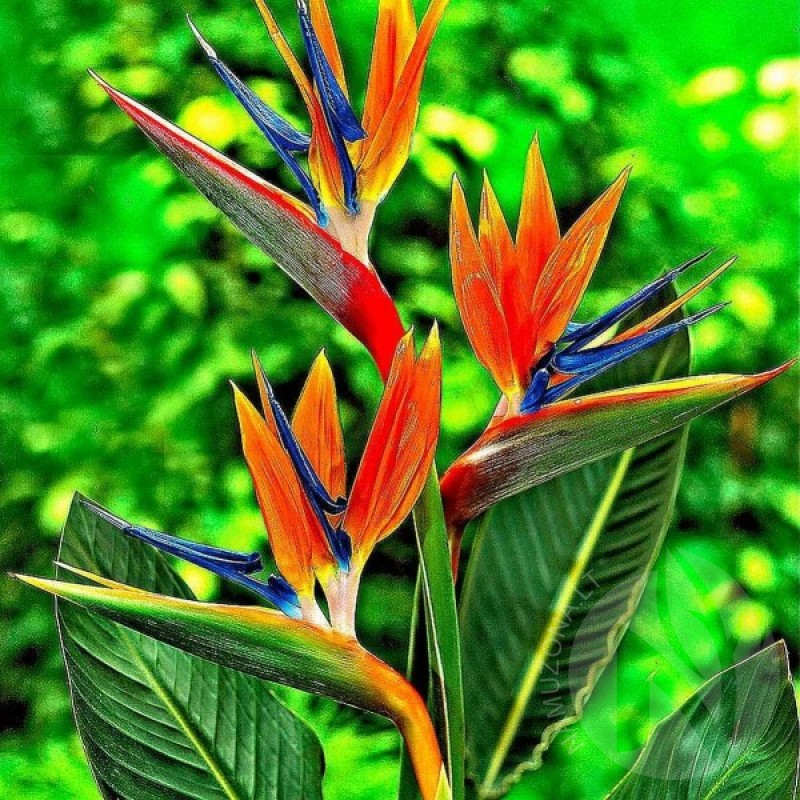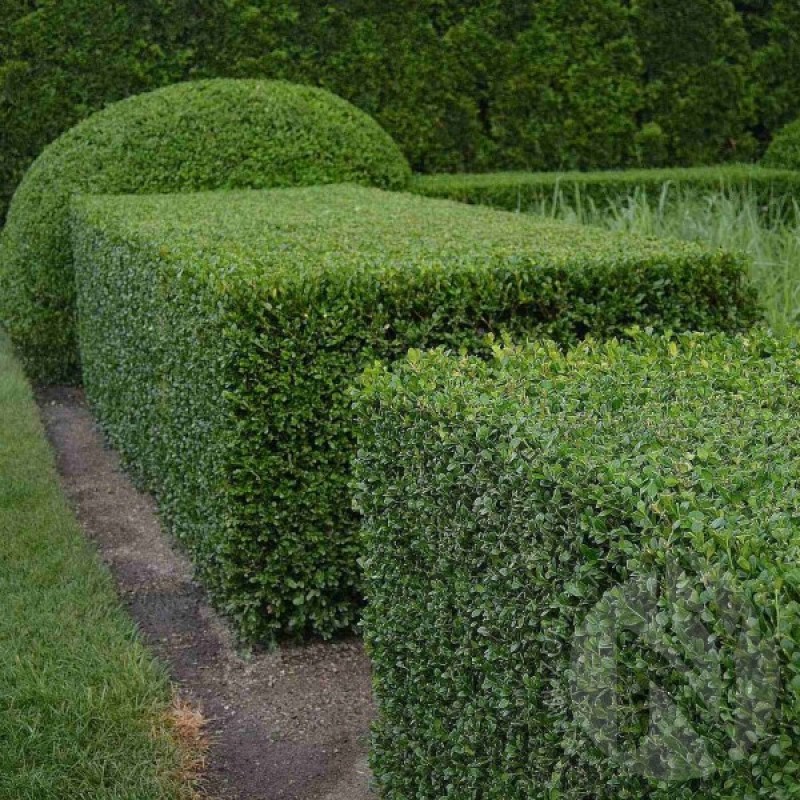

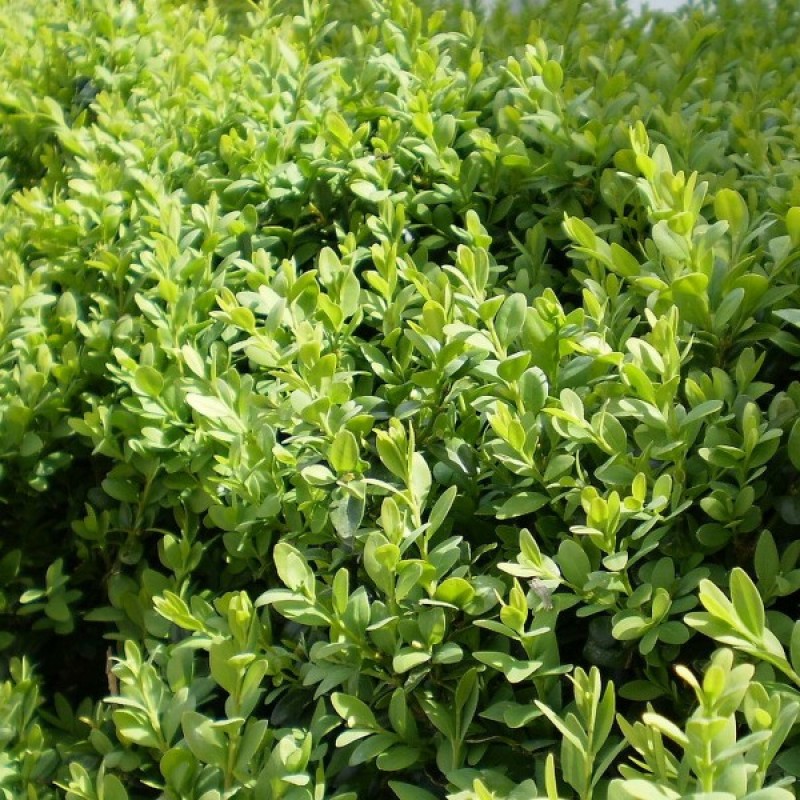
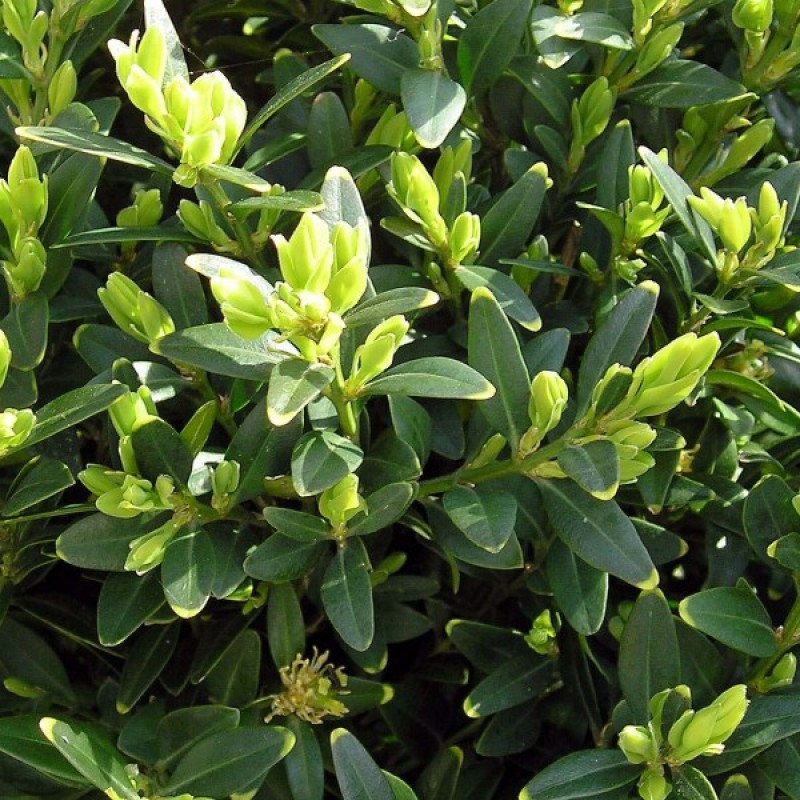
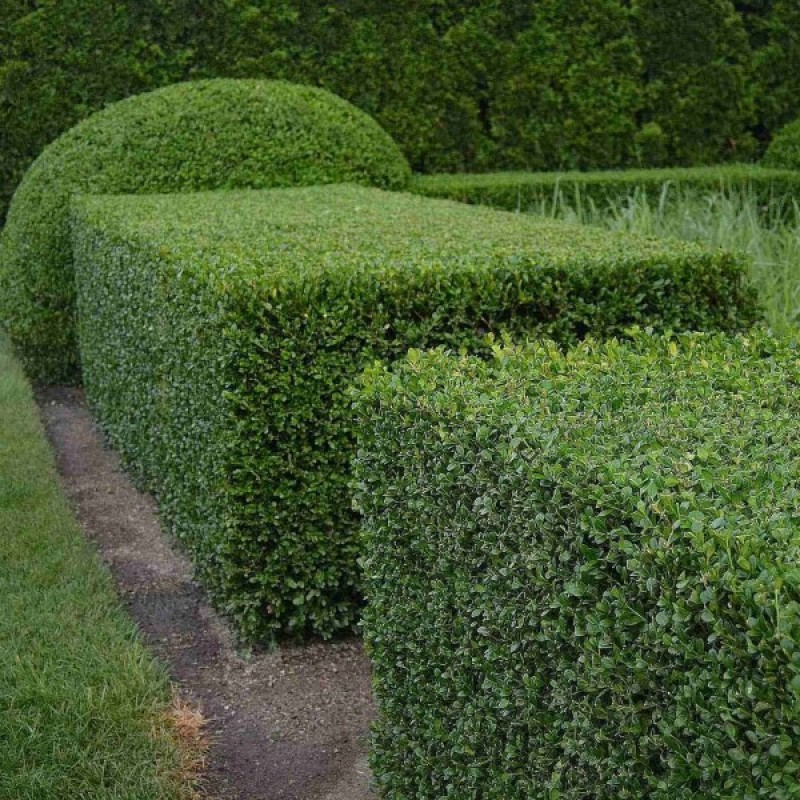
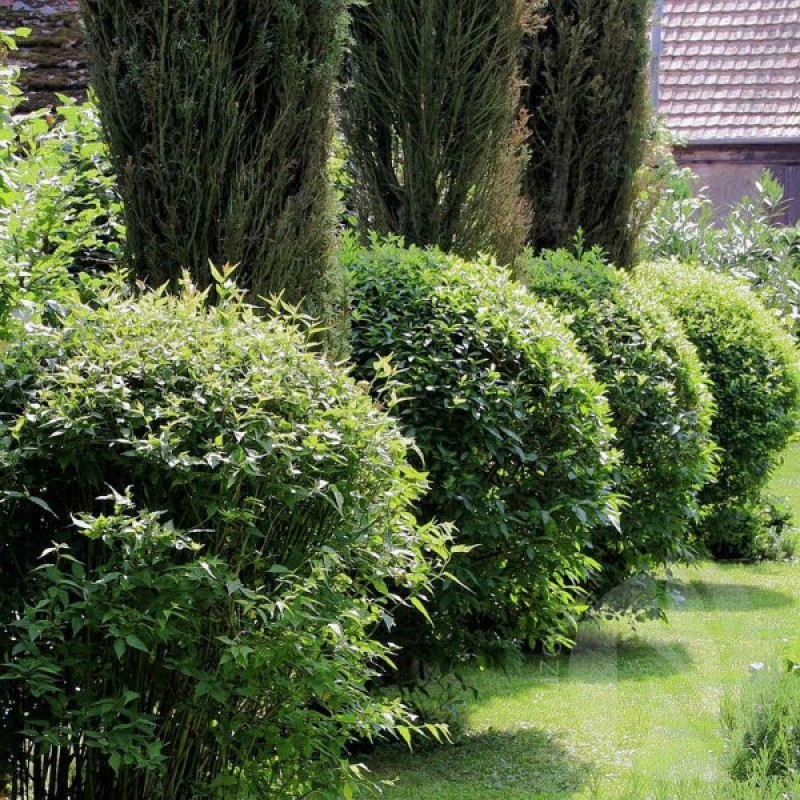
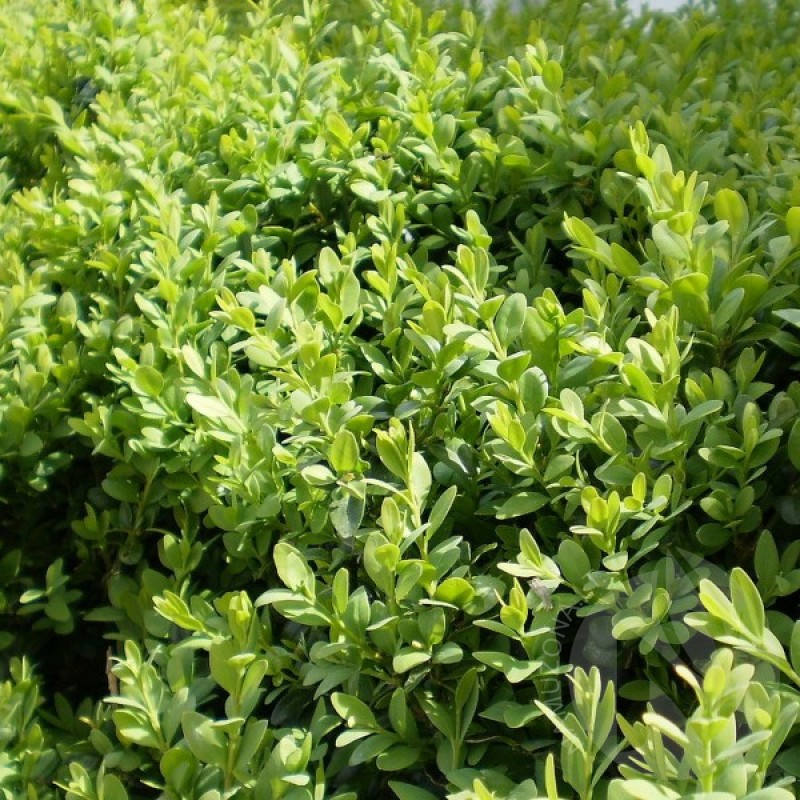
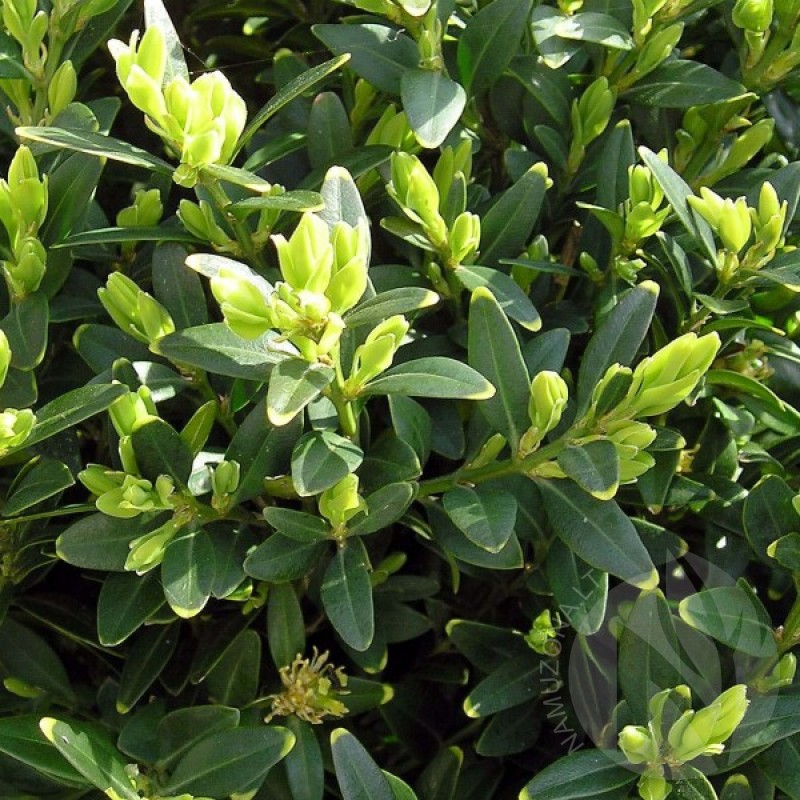
PAY ATTENTION!
All seeds (except SOLD OUT) are available for immediate shipping and will be dispatched within 1-2 business days.
INFORMATION NEEDED? PLEASE CONTACT US NOW!
Common box is a dense, rounded broadleaf evergreen shrub grown for its glossy green foliage and neat habit. Native to Europe, North Africa and Turkey, it is a classic hedge and specimen plant in many of the great European gardens. It tolerates shearing and can be shaped in ornamental forms. Its small leaves give the sheared plant a tidy texture.
Common box thrives in partial shade to full shade on fertile, well-drained soil. In alkaline soils, climates with dry, hot summers, and sites in full sun this shrub will not grow or look its best. This species is only moderately cold-hardy and can be bothered by mites, leaf miners and nematodes (tiny root worms). But there are many cultivars that are hardier and stronger than the species.
Use the cultivars of common box for specimen plants, for evergreen color in mixed borders, and for hedges, unsheared in informal gardens or sheared in formal gardens. (Learn2Grow.com)
Genus - Buxus
Species - Sempervirens
Common name - Boxwood
Pre-Treatment - Required
Hardiness zones - 5 - 8
Height - 15'-20' / 5 - 6 m
Spread - 15'-20' / 5 - 6 m
Plant type - Large Shrub/Small Tree
Vegetation type - Evergreen
Exposure - Full Sun, Partial Shade
Growth rate - Slow
Soil PH - Acidic, Neutral
Soil type - Loam, sand, well drained
Water requirements - Average Water
Landscape uses - Container, Edging, Foundation, Hedges, Rock Garden / Wall
Leaf / Flower color - Dark Green / --
GERMINATION INSTRUCTIONS
Seeds are quite easy to germinate. Moist, chilling period will increase germination rate and speed. This treatment is called stratification. Here are the steps to stratify the seeds:
1. Place the rough side of a square of sandpaper rough side up. Put six or seven seeds onto the sandpaper square. Place another square of sandpaper, rough side down, over the top of the seeds. Rub the two squares of sandpaper back and forth approximately five times. Scratching the boxwood seeds is necessary for germination. It is called scarifying.
2. Soak overnight in warm water.
3. Place the seeds in a moist material such as milled sphagnum peat, sterile soil or vermiculite. Fully drain away all of the water and place the seeds in a zip-lock bag. Place the seeds in the fridge, watch out - the seeds can’t dry out or be waterlogged otherwise the pre-treatment will be ineffective.
4. Refrigerate the seeds for 1-2 months at +2-+4C (33-41F).
5. After the seeds are stratified, plant them a 1-2 mm (1/16”) deep in a container filled with a moist, well-drained germination medium. Tamp the soil. Cover with glass or plastic and keep the container moist, but not soggy. Seeds should germinate at room temperature. As soon as the seeds germinate, place them under bright lights or move them to a greenhouse or cold frame.
Another method is to plant seeds outdoors in well prepared beds in October or before the winter. If it does not rain, then water the seedbeds before the ground freezes. The seeds will naturally receive cold treatment during the winter. The seeds should start to germinate when the seedbed warms up in the spring.
When large enough to handle, prick the seedlings out into individual pots and grow them on in a cold frame for their first winter. Plant out in late spring.
Atsiliepimų apie šią prekę kol kas nėra.
No questions about this product.


